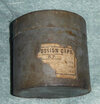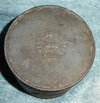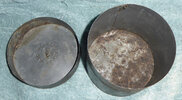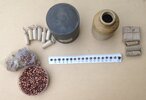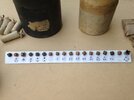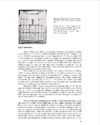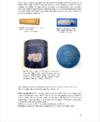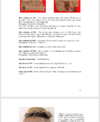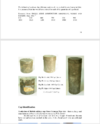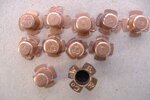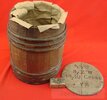That was a very good find and is a zinc cylinder for 1050 caps and was originally packed into the center of a Quarter Barrel of P/1853 Enfield Rifle cartridges. There were 70 packets of ten rounds in each such barrel surrounding a zinc cylinder containing 70 pulp bags of 15 percussion caps. 700 cartridges & 1050 caps provided 50% spare. All this was made and packed at the Royal Laboratory.
These tins are quite scarce, this is only the 6th one I have seen in over 15 years of studying the subject of British military percussion caps.
Your tin had HP (Hard Pressure) caps and is dated 1864. HP caps were introduced for the capping breechloader carbines adopted, as the flame needed to pierce through their paper cartridges. The adoption of HP was across the board for all arms though and numerous complaints were received about caps flying to pieces when fired and endangering the firer's hands & eyes etc. The solution was the addition of antimony into the composition and 400lbs pressure per cap, instead of 800lbs, when pressing it in. This provided a powerful but less violent result. The caps from your tin would all have had '63' or '64' embossed on their head (representing being made in 1863 or 1864). HP caps were superseded by the antimony caps in August 1864, those made in 1864 have 'A' over '64' impressed into (not embossed on) their head, the last ones have 'A' over '66' as that was the last year of cap manufacture by the Royal Laboratory, due to the introduction of the Snider-Enfield, which took a center-fire cartridge. In effect your tin was, theoretically, filled between January 1864 & August 1864.
The above briefly described packaging 'system' replaced an earlier packaging system that was used throughout the adoption of percussion arms and was used throughout the Crimean War. The Navy used a quite different system entirely.
Some images of part of my 'cap' collection and some screenshot snippets from a published paper I wrote on the subject, 'British Military Percussion Caps - intriguing time capsules', follow:

